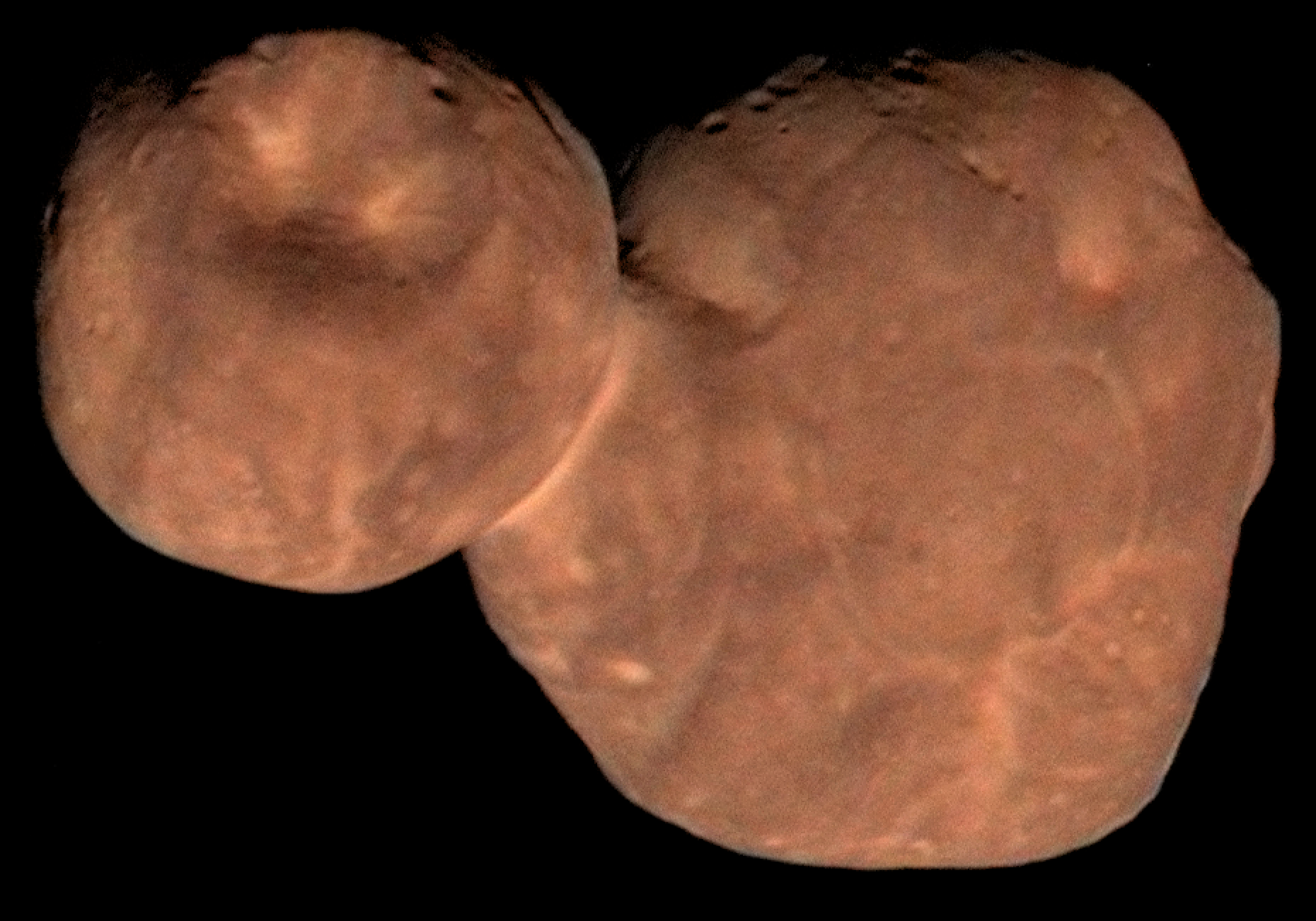
On New Year's Day 2019, NASA's New Horizons interplanetary probe conducted a flyby of (486958) 2014 MU69, otherwise known as Ultima Thule—a strange world about 4 billion miles from Earth in the outer reaches of the solar system. It is the most distant object humankind has ever explored.
Now, the New Horizons mission team has published the first set of data from this flyby in the journal Science, casting new light on Ultima, which is located in a vast disk of small bodies that orbit our sun known as the Kuiper Belt.
The data indicated that MU69 is a far more complex object than expected, providing new insights on its development, geology and composition. Researchers suggest the rocky world is an ancient relic that has remained largely untouched—even by the sun's heat—since its formation 4.5 billion years ago.
This early period in the solar system's development was marked by planet formation. In fact, Ultima is what's known as a "planetesimal"—small objects made up of rock, dust and other materials that are thought to have coalesced to gradually form planets over time.
"We're looking into the well-preserved remnants of the ancient past," New Horizons Principal Investigator Alan Stern, from the Southwest Research Institute in Boulder, Colorado, said in a statement. "There is no doubt that the discoveries made about Ultima Thule are going to advance theories of solar system formation."
MU69 is essentially made up of two distinctly shaped lobes that are thought to have once orbited each other, before colliding and fusing in a "gentle merger." The larger lobe, nicknamed "Ultima," is about 22 miles long and has an unusual flat shape. The smaller one, known as "Thule," is smaller and rounder.
Several features on the surface of Ultima are described in the new study, including bright spots, hills, troughs, craters and pits. The largest depression the mission team identified—which has been named the "Maryland" crater—measures around 5 miles wide.
The team also noticed there is very little variation in the color and composition of Ultima, being almost totally red. In fact, they say that it is the reddest outer solar system object ever visited—a hue which is likely the result of the modification of organic materials.
In terms of composition, the New Horizons team found evidence for methanol, water ice and organic molecules on the surface, but no sign of any moons, rings, dust clouds or an atmosphere surrounding it.
The latest results are based on just 10 percent of the flyby data sent back to Earth by New Horizons, according to the researchers. We'll have to wait until 2020 until scientists receive the remaining 90 percent.
Uncommon Knowledge
Newsweek is committed to challenging conventional wisdom and finding connections in the search for common ground.
Newsweek is committed to challenging conventional wisdom and finding connections in the search for common ground.
About the writer
Aristos is a Newsweek science reporter with the London, U.K., bureau. He reports on science and health topics, including; animal, ... Read more
To read how Newsweek uses AI as a newsroom tool, Click here.








